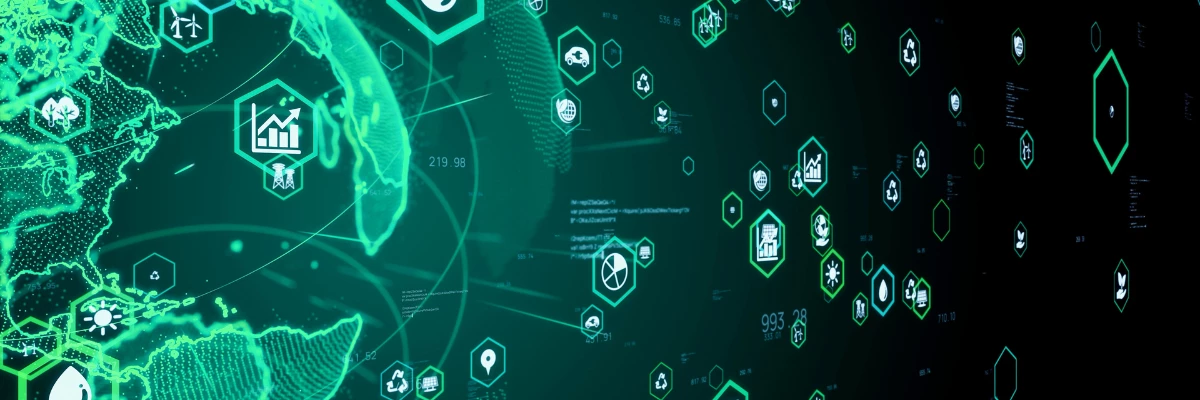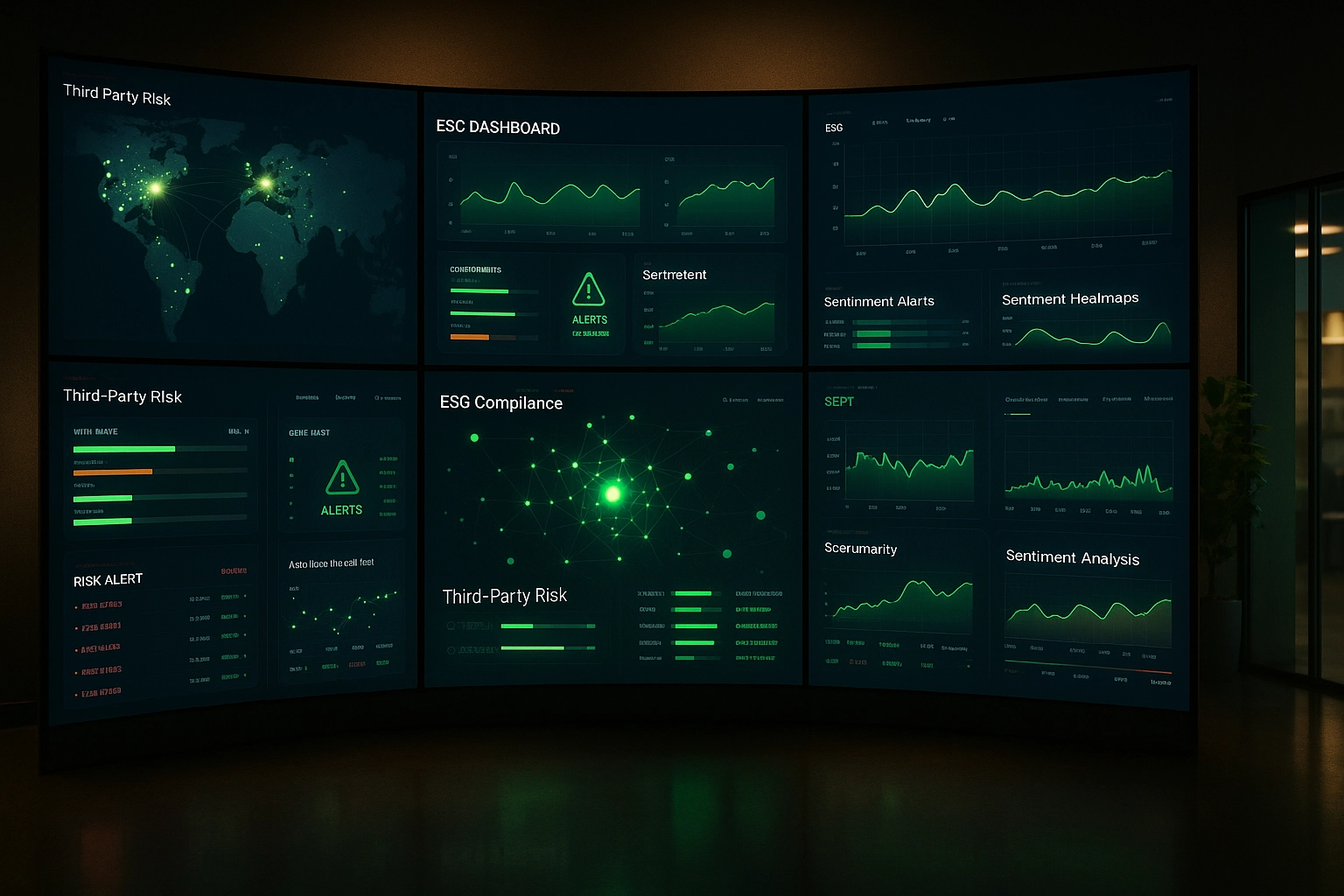Automating Sapin II Compliance Controls: A Technological Solution for Regulatory Conformity

In a constantly evolving regulatory environment, French companies face increasing challenges in complying with Sapin II law, particularly regarding anti-corruption efforts. These requirements are especially critical in strategic sectors such as the public sector, construction, industry, and retail, where partner-related risks are omnipresent. Automating compliance controls through advanced technological solutions offers an effective way to manage these complex issues.
By adopting a third-party governance-centered approach, organizations can optimize processes and strengthen operational resilience. For instance, in the public sector, several local authorities have reduced administrative processing times by 30% through automated compliance assessments. These results illustrate the tangible impact of a well-integrated technological strategy aligned with the legal obligations under Sapin II.
Understanding Sapin II and Its Requirements
Adopted in December 2016, Sapin II law marked a major turning point in France’s anti-corruption framework. It requires companies exceeding specific thresholds (500 employees and €100 million in consolidated revenue) to implement comprehensive risk prevention mechanisms. These obligations apply to both private and public entities, directly impacting third-party relationships.
The Core Pillars of Sapin II
The law is built around eight key measures designed to ensure strict compliance and increased transparency in business practices:
- Risk mapping: Identifying and prioritizing high-risk areas, especially in third-party relationships.
- Code of conduct: Defining acceptable and prohibited behaviors regarding corruption.
- Third-party evaluation procedures: Systematic verification of business partners to prevent illicit practices.
- Internal alert systems: Secure mechanisms to report suspicious behavior.
These measures require rigorous management and frequent updates to remain compliant.
Un impact sectoriel différenciéSector-Specific Impacts
Key sectors like the public sector, construction, industry, and retail are particularly affected. For example, in the public sector, risk mapping has become essential to ensure transparency in public procurement. In construction, subcontractor evaluation is crucial for compliance with HSE (Health, Safety, Environment) standards.
Penalties for Non-Compliance
Failure to comply with Sapin II requirements can result in severe administrative or criminal penalties. Companies face fines up to €1 million, while executives may incur penalties of €200,000 and temporary bans from public contracts. These sanctions aim to ensure the effective implementation of anti-corruption systems.
Thus, Sapin II imposes a strict framework that goes beyond mere legal compliance. It encourages companies to adopt proactive, collaborative third-party governance to prevent corruption risks. Automating these processes is a strategic lever for efficiently meeting increasing demands while optimizing internal resources.
Measurable Benefits of Compliance Automation
Automating compliance controls under Sapin II delivers tangible benefits for companies navigating complex regulatory requirements. Through advanced technological integration, organizations can boost compliance, streamline operations, and reduce costs. Key benefits include the reduction of human error and improved operational efficiency.
Reducing Human Error
Manual processes are prone to mistakes that can jeopardize compliance and lead to significant financial penalties. Automated systems greatly reduce these risks by ensuring consistent and ongoing monitoring.
For example, in the public sector, digital technologies have helped local authorities reduce administrative errors by 40% while speeding up the handling of sensitive data. This approach also enhances audit reliability by centralizing critical information in secure databases.
Increased Efficiency and Cost Savings
Automation enables resource optimization by minimizing time spent on repetitive, time-consuming tasks. AI-based tools and predictive analytics rapidly identify potential anomalies, enabling proactive risk responses.
Digitizing compliance controls is therefore a strategic lever for companies seeking to combine regulatory compliance with operational performance. By reducing manual errors and streamlining processes, these solutions not only ensure legal compliance but also enhance organizational resilience.
Want to automate your compliance processes?
Discover how Aprovall360 transforms third-party management with innovative solutions.
Ensuring Compliance Through Technology
Complying with Sapin II requires continuous, rigorous processes. Technological advances now enable companies to simplify and optimize these efforts while proactively monitoring third-party risks. Automated tools allow for data centralization and enhanced risk detection.
Technological Differentiators for Enhanced Compliance
Technologies like document AI and real-time monitoring play a key role in third-party risk management. These tools rapidly analyze large data volumes, detect anomalies, and trigger contextual alerts. For example, in industry, AI has helped a manufacturer accelerate REACH certification by 20% while reducing administrative errors.
Such technologies also facilitate the generation of detailed regulatory reports for agencies like the French Anti-Corruption Agency (AFA), streamlining audits and ensuring full traceability.
Centralized and Shared Data
One of the main advantages of automated TPRM solutions is the ability to centralize all third-party data in a single platform. This gives a clear overview and simplifies compliance tracking. For example, in the public sector, some local governments have adopted automated systems to manage public subcontractors, reducing administrative delays by 35%.
This centralization also fosters internal and external stakeholder collaboration, enhancing operational resilience.
Proactive Prevention Through Automation
Automated systems don’t just detect irregularities — they also anticipate risks using predictive analytics. In the construction sector, for instance, a major player identified potential non-compliance related to posted workers early on, avoiding costly sanctions.
These tools also enable automated collaborative evaluations of third parties, ensuring standardized and compliant processes.
Discover how Aprovall simplifies third-party governance with advanced technological solutions.
Technology is thus a critical enabler for meeting Sapin II requirements. By adopting innovative tools like document AI and real-time monitoring, companies can boost compliance, optimize resources, and enhance third-party governance.
Pay-to-Collect Model: A Strategic Lever for Automation
The pay-to-collect model offers an innovative, flexible solution for companies seeking to optimize compliance management while controlling costs. Unlike fixed-rate models, this approach charges based on data collected and services used, ensuring a perfect fit for organizational needs and agile financial management.
Tailored Pricing for Real Needs
A key advantage of the pay-to-collect model is its cost adjustment based on activity volume. For example, in the retailsector, a major company cut compliance costs by 25% using this model, thanks to resource pooling and supplier-specific billing. This flexibility also supports better budget planning and investment in strategic initiatives.
Resource Optimization and Cost Reduction
By automating data collection and processing, the pay-to-collect model frees internal teams from repetitive tasks, allowing them to focus on higher-value activities like third-party evaluations and process improvement. In construction, for instance, one company reduced subcontractor document tracking time by 30% while strengthening HSE compliance.
Enhancing Transparency and Compliance
The pay-to-collect model is a strategic lever for companies aiming to combine financial flexibility, operational efficiency, and regulatory compliance. With this innovative system, organizations can optimize internal processes and strengthen resilience in the face of Sapin II demands.
Risk Mapping: A Foundational Pillar
Risk mapping is a central component of Sapin II compliance programs. This strategic tool identifies, analyzes, and ranks organizational risks, particularly in third-party relationships. Thanks to digitization, the process becomes more accurate, dynamic, and tailored to business needs. Some providers offer risk mapping directly integrated within TPRM solutions.
Risk mapping gives a clear view of potential vulnerabilities, enabling the implementation of targeted action plans. For example, in construction, which involves many subcontractors, automated systems helped a company reduce ICPE non-compliance by 15%. This performance was enabled by software capable of scanning and evaluating critical third-party data in real time.
Automation for Dynamic Mapping
Advanced analytics technologies like data analytics turn risk mapping into a dynamic, evolving tool. Unlike manual approaches, which are static and time-consuming, automated solutions offer frequent updates based on real-time data. In the public sector, local governments using this method saw administrative delays drop by 40%.
Learn more about APIs dedicated to the public sector with Aprovall360.
A Key Tool for Risk Prevention
By identifying critical zones before issues arise, risk mapping directly supports the prevention of corruption and non-compliant behaviors. In industry, a supply chain company anticipated 20% of anomalies thanks to automated mapping and contextual alerts.
Corruption Prevention: A Central Issue
Corruption prevention is at the heart of the requirements set forth by the Sapin II law, which mandates that companies implement robust mechanisms to ensure compliance. By leveraging advanced technological solutions, organizations can strengthen their internal controls and effectively prevent risky behavior. Two key areas stand out in this approach: the optimization of internal control processes and the reinforcement of whistleblowing systems.
Optimizing Internal Control Processes
Internal control processes play a vital role in the identification and management of corruption risks. Thanks to digitalization, these procedures become more streamlined and standardized, thereby reducing inconsistencies and human error. For example, in the industrial sector, a supply chain company was able to reduce the time spent on document verification by 25% using an automated third-party assessment system.
The integration of predictive algorithms also makes it possible to anticipate vulnerability areas, ensuring continuous and proactive monitoring. These tools provide full traceability of actions taken, thereby facilitating both internal and external audits.
Reinforcing Whistleblowing Systems
Internal whistleblowing systems are essential for quickly detecting suspicious or non-compliant behavior. Automation helps secure these systems by ensuring confidential and timely processing of reports. For instance, in the public sector, several local authorities have implemented digital platforms that increased the reporting rate by 30%, thanks to their user-friendliness and reliability.
These systems also enable real-time analysis of incoming alerts, prioritizing those that require immediate intervention. This strengthens employee and third-party trust in the system while improving the organization’s responsiveness to identified risks.
Thus, corruption prevention goes beyond legal obligation; it is a strategic lever to enhance organizational resilience and protect corporate reputation. By optimizing internal processes and securing whistleblowing systems, organizations can not only meet Sapin II law requirements but also establish a sustainable culture of integrity and transparency.
Ready to optimize your third-party governance?
These articles might interest you
-
 14 September 2024Aprovall supports you in your new due diligence obligations arising from the European CS3D Directive.SolutionsThe Corporate Sustainability Due Diligence Directive, known as “CS3D”, was definitively adopted on Wednesday, April 24, 2024, by the European Parliament. The directive now needs to be officially approved by the Council and signed before being published in the EU Official Journal. It will enter into force 20 days later. Member States will then have […]
14 September 2024Aprovall supports you in your new due diligence obligations arising from the European CS3D Directive.SolutionsThe Corporate Sustainability Due Diligence Directive, known as “CS3D”, was definitively adopted on Wednesday, April 24, 2024, by the European Parliament. The directive now needs to be officially approved by the Council and signed before being published in the EU Official Journal. It will enter into force 20 days later. Member States will then have […]Read more
-
 08 July 2025Why integrate media monitoring into your third-party evaluation?SolutionsWith the rapid acceleration of digital information and the proliferation of media sources, real-time monitoring of your third-party partners’ media presence has become a critical strategic issue. Media monitoring is now an essential part of collaborative evaluation processes for any analyst seeking a comprehensive view of third-party risk. Whether the information is positive or negative, […]
08 July 2025Why integrate media monitoring into your third-party evaluation?SolutionsWith the rapid acceleration of digital information and the proliferation of media sources, real-time monitoring of your third-party partners’ media presence has become a critical strategic issue. Media monitoring is now an essential part of collaborative evaluation processes for any analyst seeking a comprehensive view of third-party risk. Whether the information is positive or negative, […]Read more
-
 02 April 2025Understanding Scope 3 Assessment in the Value ChainSolutionsAnticipating Your Carbon Footprint by Assessing Suppliers and Identifying Scope 3 Maturity In a context where third-party environmental governance is becoming a major strategic issue, companies must now evaluate and manage the carbon impact of their entire value chain. Scope 3 assessment represents a considerable but essential challenge to ensure organizations’ operational resilience in the […]
02 April 2025Understanding Scope 3 Assessment in the Value ChainSolutionsAnticipating Your Carbon Footprint by Assessing Suppliers and Identifying Scope 3 Maturity In a context where third-party environmental governance is becoming a major strategic issue, companies must now evaluate and manage the carbon impact of their entire value chain. Scope 3 assessment represents a considerable but essential challenge to ensure organizations’ operational resilience in the […]Read more
-
 11 March 2025Comprehensive Methodology for Third-Party Risk MappingSolutionsIn today’s business environment, where relationships with external partners are strategic, third-party governance has become an essential priority. Third-party risk mapping is a critical tool for identifying, structuring, and prioritizingfactors that may impact the organization. According to a recent Gartner study, over 60% of organizations have now implemented a centralized or federated model for managing third-party risks, […]
11 March 2025Comprehensive Methodology for Third-Party Risk MappingSolutionsIn today’s business environment, where relationships with external partners are strategic, third-party governance has become an essential priority. Third-party risk mapping is a critical tool for identifying, structuring, and prioritizingfactors that may impact the organization. According to a recent Gartner study, over 60% of organizations have now implemented a centralized or federated model for managing third-party risks, […]Read more
